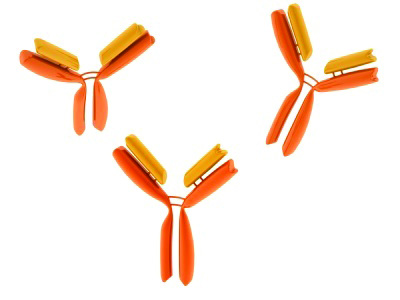Risk for diabetes spotted in genome
Type 2 diabetes affects more than 1 billion people worldwide – and disease incidence is increasing in Asian countries. Although more than 20 genetic regions have been linked to type 2 diabetes, much of the genetic contribution to this disease remains largely unknown.
Xiao Ou Shu, M.D., Ph.D., and colleagues conducted a genome-wide association study involving a total of 9,794 type 2 diabetes cases and 14,615 controls, predominantly Asians, and have identified three new genetic markers for the disease. The most significant marker (locus) was located on chromosome 13; the closest known gene to this locus is a member of the sprouty gene family, which encodes proteins involved in insulin signaling and development of the pancreas. The other two markers – on chromosomes 10 and 15 – lie near type 2 diabetes susceptibility loci previously identified in populations with European ancestry.
The study, published Sept. 16 in PLoS Genetics, demonstrates the value of conducting genome-wide association studies in non-European populations to identify new genetic risk variants for this disease.
— Melissa Marino
Infection-fighting frogs

iStockphoto
B. dendrobatidis
Louise Rollins-Smith, Ph.D., graduate student Jeremy Ramsey, and colleagues examined immune responses to B. dendrobatidis in the resistant African clawed frog, Xenopus laevis. They report in the September issue of Infection and Immunity that X. laevis developed a mild infection and secreted anti-microbial peptides in the skin mucus after exposure to the fungus. The peptides – purified or in mixtures – inhibited B. dendrobatidis growth in vitro. Immunization of frogs with heat-killed B. dendrobatidis induced pathogen-specific antibodies in the serum, and frogs that had been infected with the fungus 5 months earlier contained specific antibodies in the skin mucus. The findings suggest that X. laevis frogs use both innate (antimicrobial peptides) and adaptive (antibodies) immune responses to resist lethal B. dendrobatidis infections and could be helpful in developing strategies to protect endangered frog populations.
— Leigh MacMillan
Low vitamins: more artery disease
Combined deficiencies of the anti-oxidant vitamins C and E worsen early atherosclerosis – an inflammatory condition associated with oxidative stress – in a mouse model, James May, M.D. and colleagues report in the September issue of Arteriosclerosis, Thrombosis, and Vascular Biology.

iStockphoto
The findings support the notion that oxidative stress accelerates atherosclerosis and suggest that vitamin supplementation may impact the early stages of atherosclerosis development.
— Leigh MacMillan
Hiding from antibodies
Goodpasture disease and Alport posttransplant nephritis, autoimmune diseases that cause severe kidney inflammation, result from antibodies that attack a section – the NC1 domain – of type IV collagen found in the kidney’s glomerulus. However, Goodpasture and Alport antibodies recognize subtly different parts (epitopes) of this molecule.

iStockphoto
To investigate this difference, Dorin-Bogdan Borza, Ph.D., and colleagues injected mice with both kinds of antibodies from patients. They found that although both antibodies bound to mouse NC1 domains in vitro, only Alport antibodies bound to the domains in mice and caused rapidly-progressing kidney inflammation. This difference occurs because epitopes for Goodpasture antibodies are masked in vivo by extensive intermolecular cross-linking of the NC1 domains in mice (humans and monkeys are vulnerable to Goodpasture antibodies due to incomplete crosslinking).
The results, reported in the Sept. 15 Journal of Immunology, define a structural basis for variations in how antibodies recognize their targets and offer insight on how autoimmunity is triggered and, potentially, how it can be prevented.
— Melissa Marino
We welcome suggestions for research to highlight in Aliquots. The items should be primary research articles (no reviews, editorials or commentaries) published within the last two months in a peer-reviewed journal. Please send the article citation (PDF if available) and any other feedback about the column to: aliquots@vanderbilt.edu.
Past Aliquots
June 22, 2012
June 8, 2012
May 11, 2012
April 27, 2012
April 13, 2012
March 30, 2012
March 16, 2012













